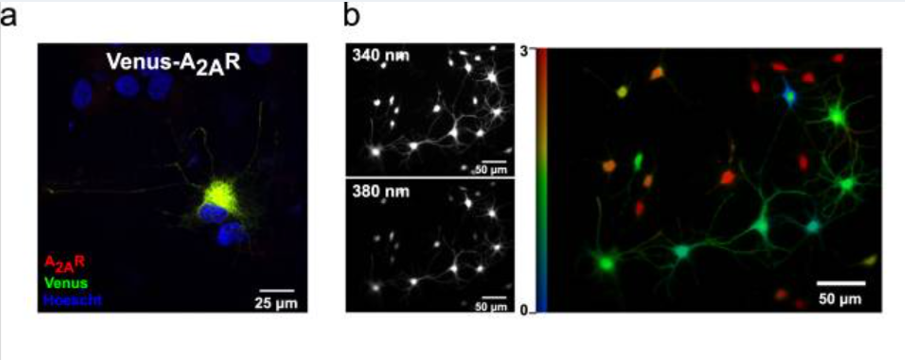Cat. #160728
Venus-A2AR vector
Cat. #: 160728
Sub-type: pcDNA 3.1
Availability: Please enquire for quantities and pricing
Target: Adenosine A2A receptor
Bacterial Resistance: Ampicillin
Selectable Markers: Neomycin
This fee is applicable only for non-profit organisations. If you are a for-profit organisation or a researcher working on commercially-sponsored academic research, you will need to contact our licensing team for a commercial use license.
Contributor
Inventor: LuĂÂĂÂsa V Lopes
Institute: Instituto de Medicina Molecular JoĂÂÄšÂo Lobo Antunes
Tool Details
*FOR RESEARCH USE ONLY (for other uses, please contact the licensing team)
- Tool name: Venus-A2AR vector
- Alternate name: A2AR
- Research fields: Cell biology;Neurobiology
- Tool sub type: pcDNA 3.1
- Bacterial resistance: Ampicillin
- Selectable markers: Neomycin
- Description: Venus-A2AR construct was generated with the In-fusion HD Cloning Kit (Clontech Takara, USA). Venus and A2AR fragments were produced by using, respectively, the pair of primers 5'-GTTTAAACTTAAGCTTATGGTGAGCAAGGGCGAG-3' and 5'-GCTGCCCATGGTGGCCTTGTACAGCTCGTCCATG-3', and the pair of primers 5'-GCCACCATGGGCAGCAGC-3' and 5'-AAACGGGCCCTCTAGATCAGCTGGGGGCGAACTC-3'. PCR fragments were cloned into the vector pcDNA3.1(ÄËĂÂĂÂ+ÄËĂÂĂÂ) linearized with HindIII and XbaI, and the resulting construct was verified by DNA sequencing (GATC Biotech, Germany).
- Additional notes: A construct encoding a Venus-A2AR fusion protein to explore the synaptic function of A2AR
Target Details
- Target: Adenosine A2A receptor
Application Details
- Application notes: Venus-A2AR construct was generated with the In-fusion HD Cloning Kit (Clontech Takara, USA). Venus and A2AR fragments were produced by using, respectively, the pair of primers 5'-GTTTAAACTTAAGCTTATGGTGAGCAAGGGCGAG-3' and 5'-GCTGCCCATGGTGGCCTTGTACAGCTCGTCCATG-3', and the pair of primers 5'-GCCACCATGGGCAGCAGC-3' and 5'-AAACGGGCCCTCTAGATCAGCTGGGGGCGAACTC-3'. PCR fragments were cloned into the vector pcDNA3.1( + ) linearized with HindIII and XbaI, and the resulting construct was verified by DNA sequencing (GATC Biotech, Germany).
References
- Temido-Ferreira et al. 2020. Mol Psychiatry. 25(8):1876-1900. PMID: 29950682.



